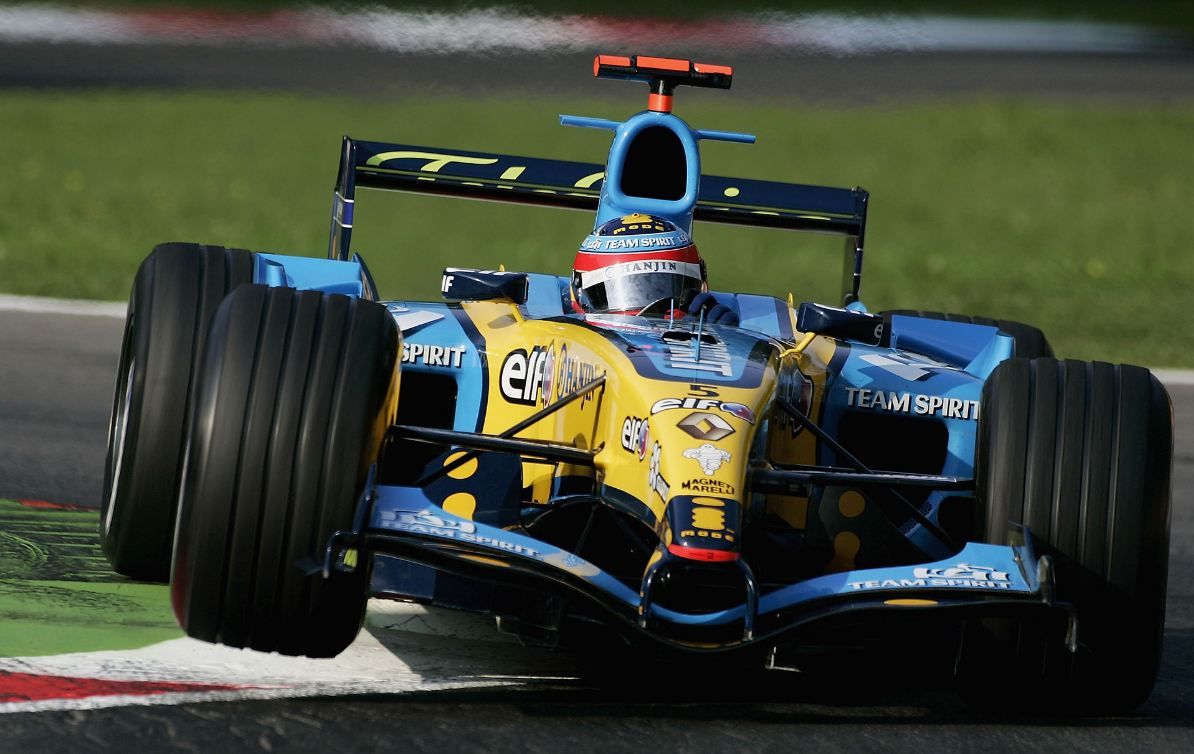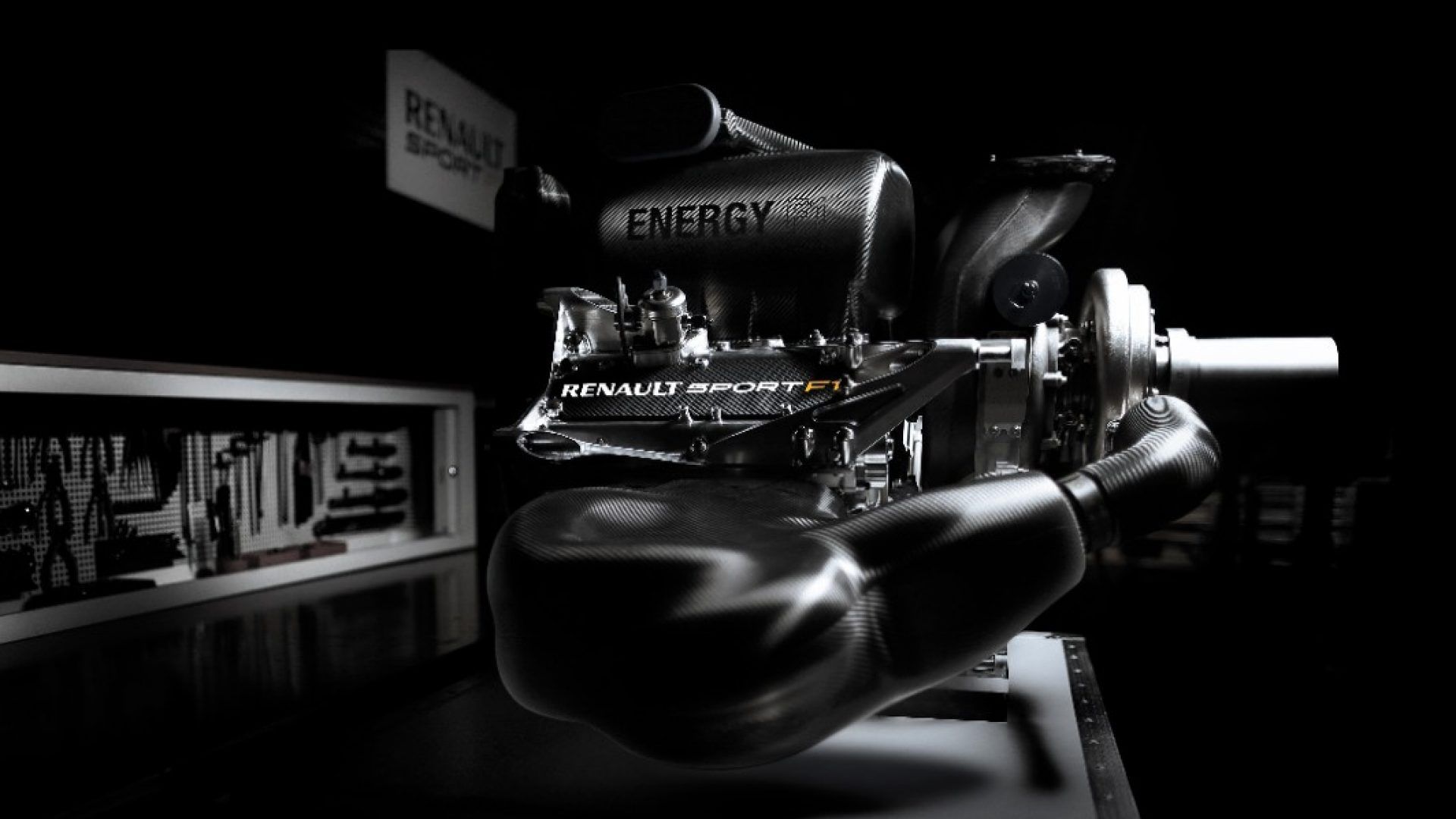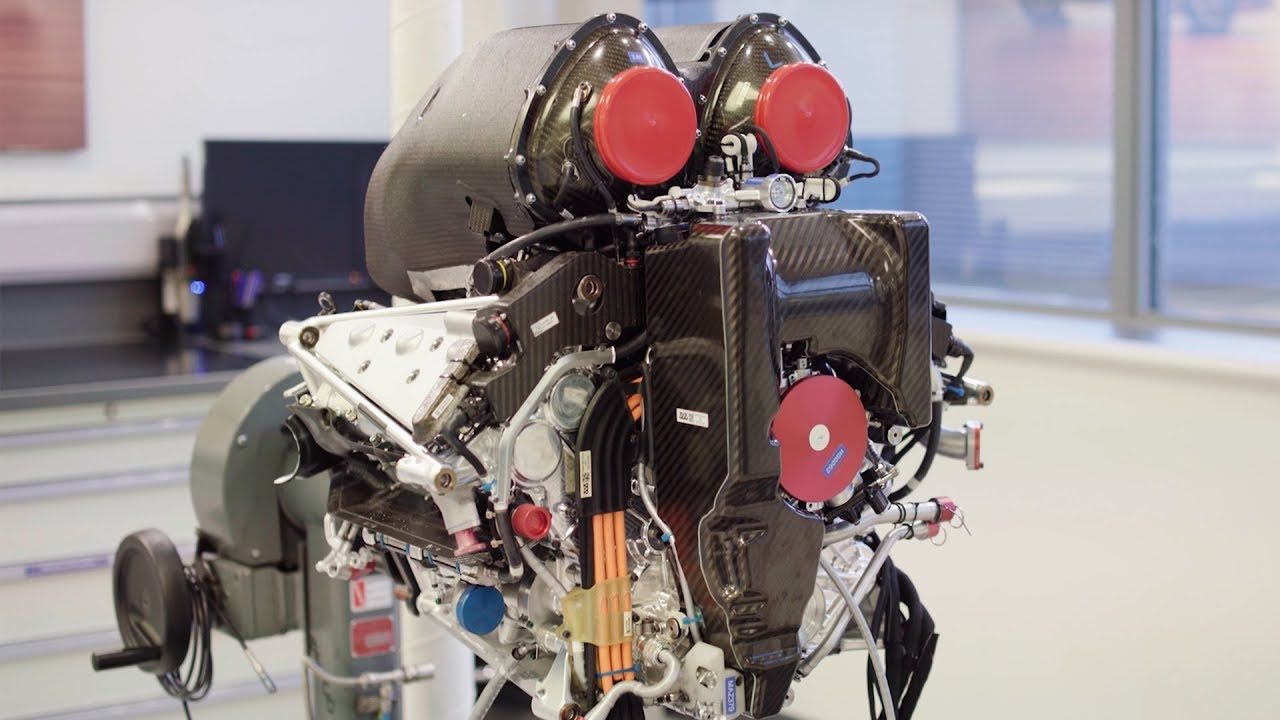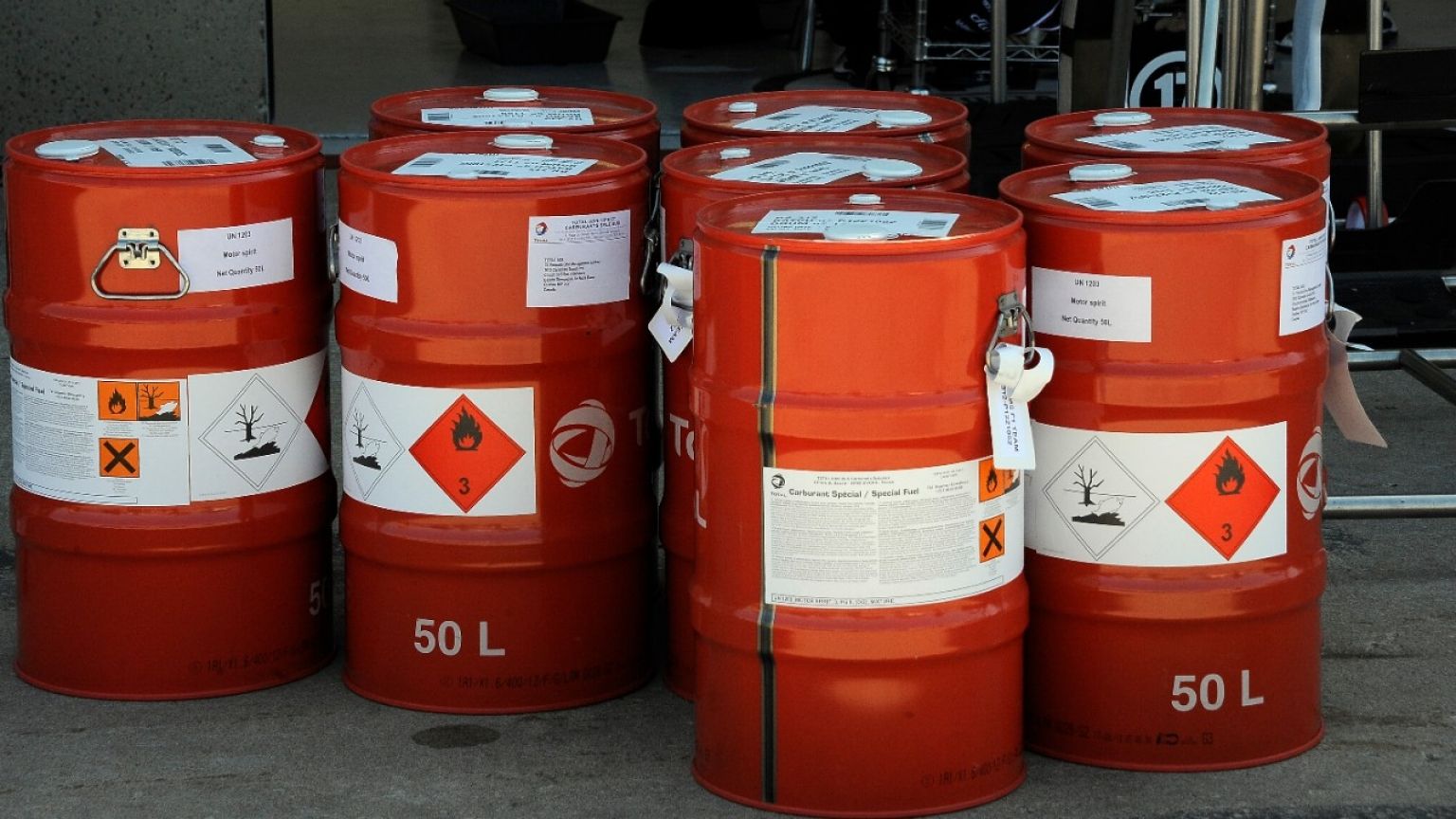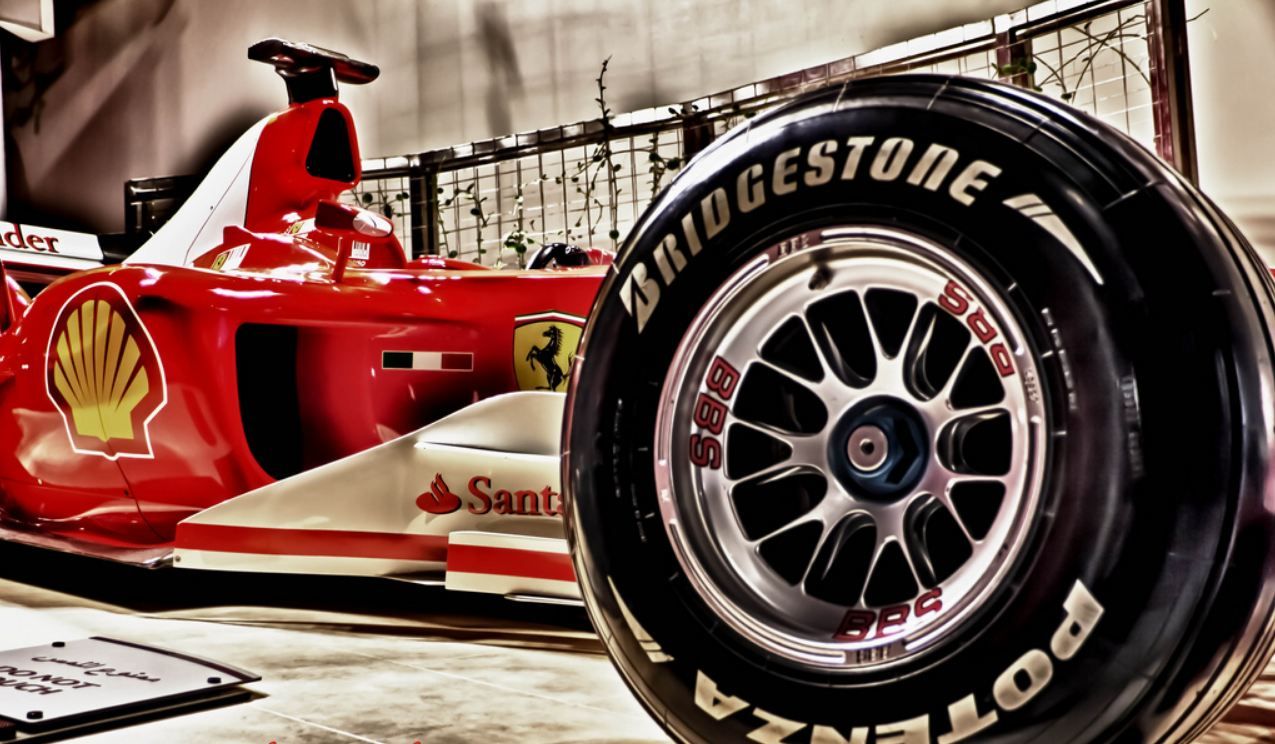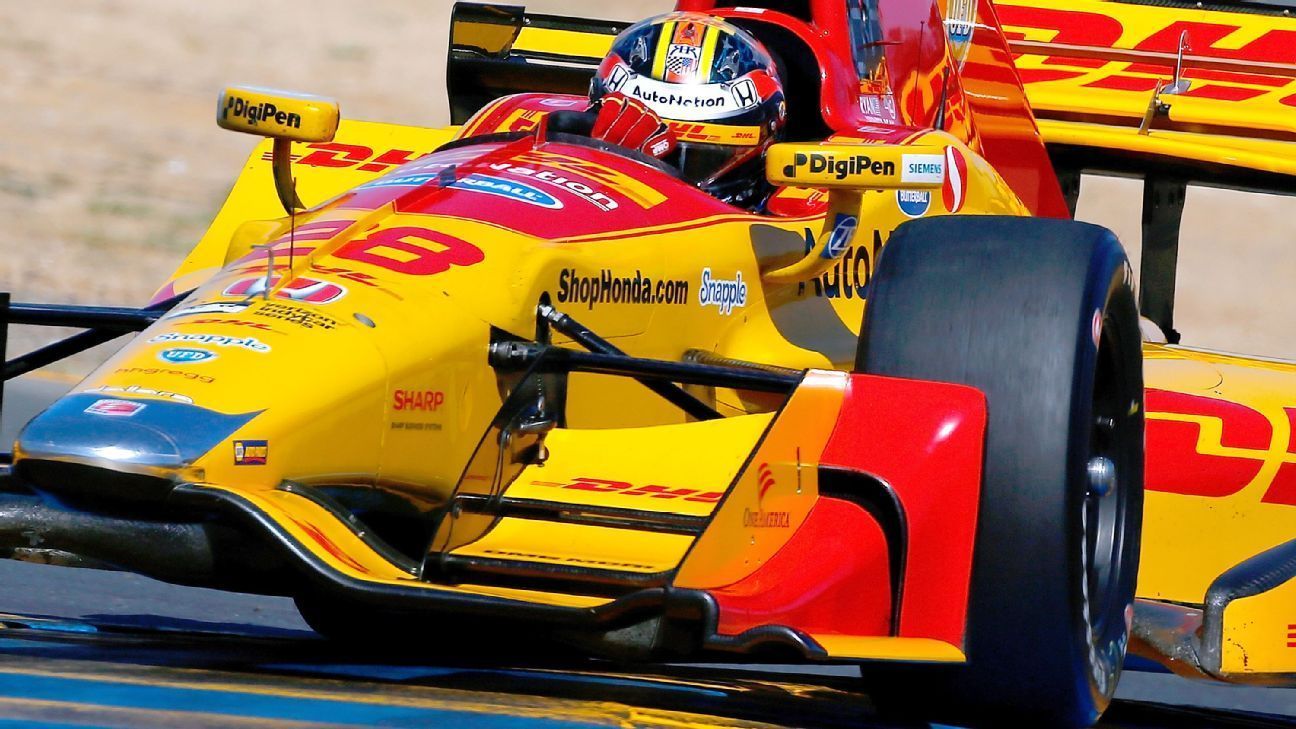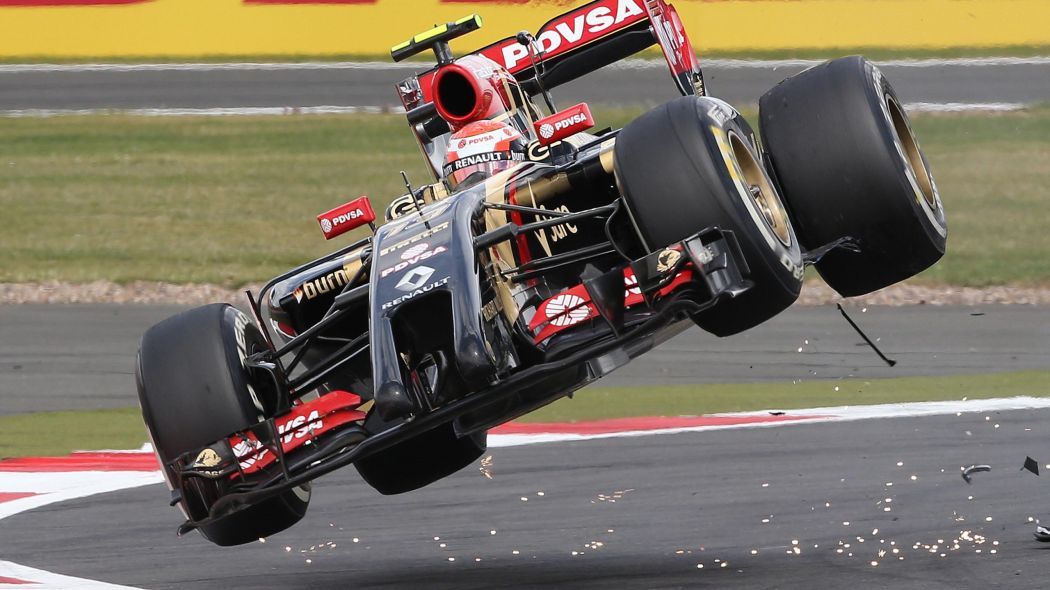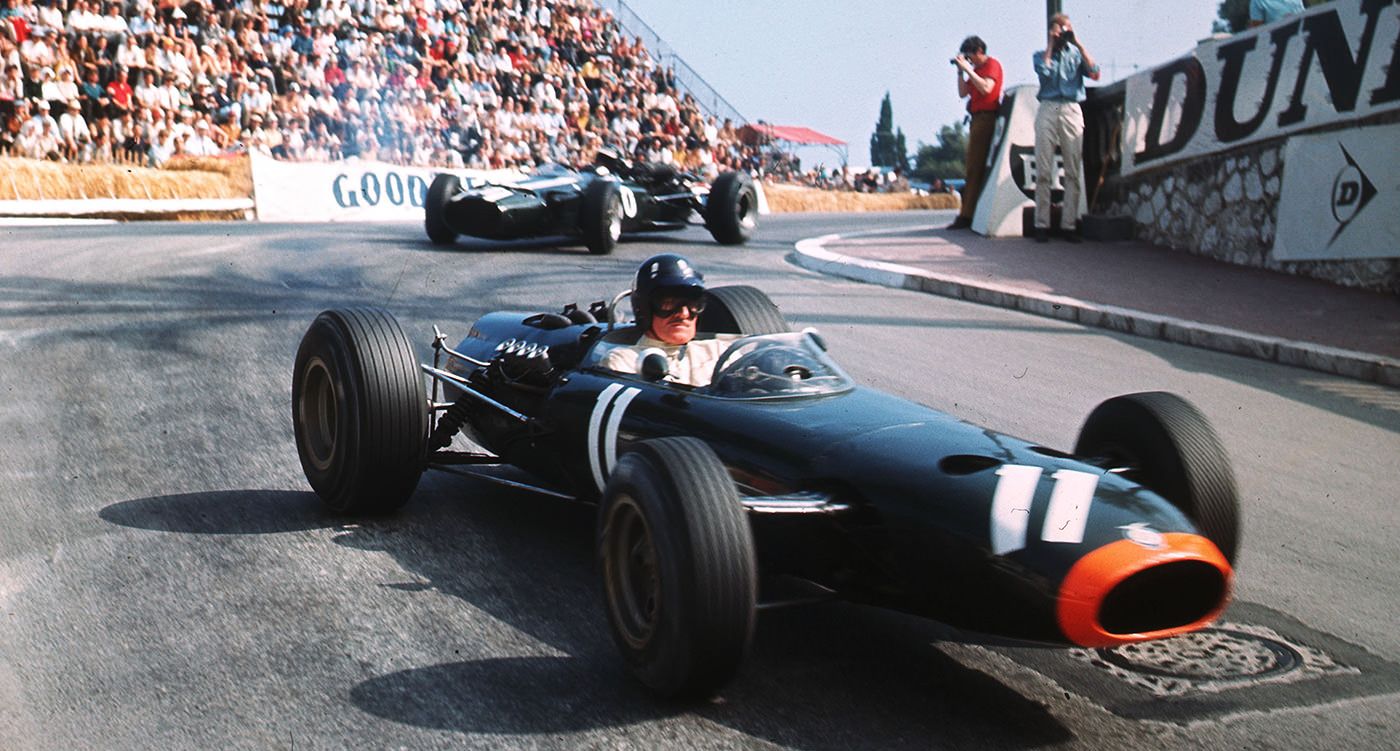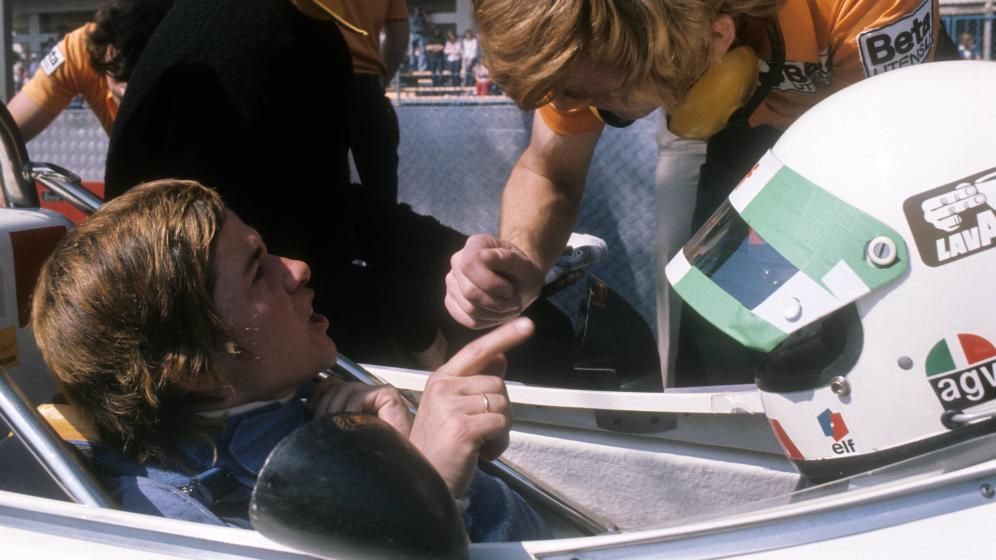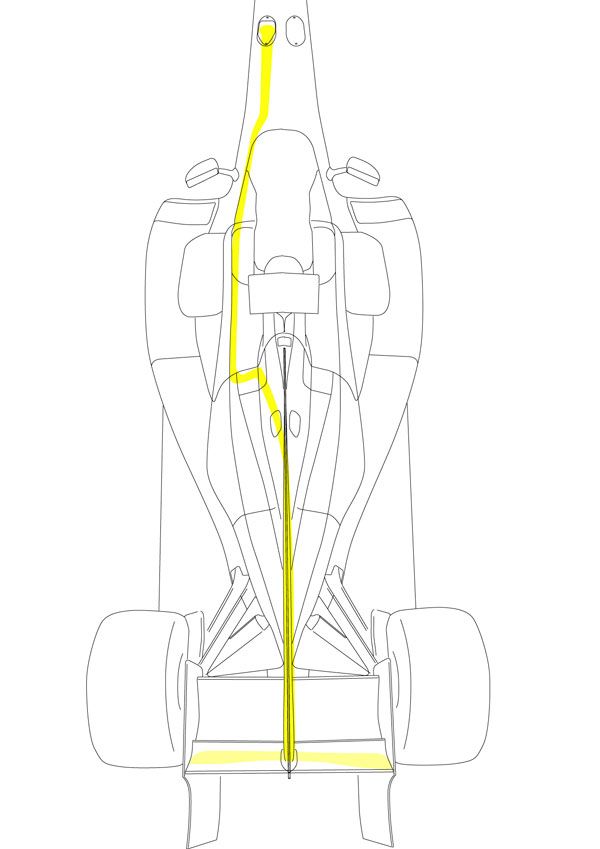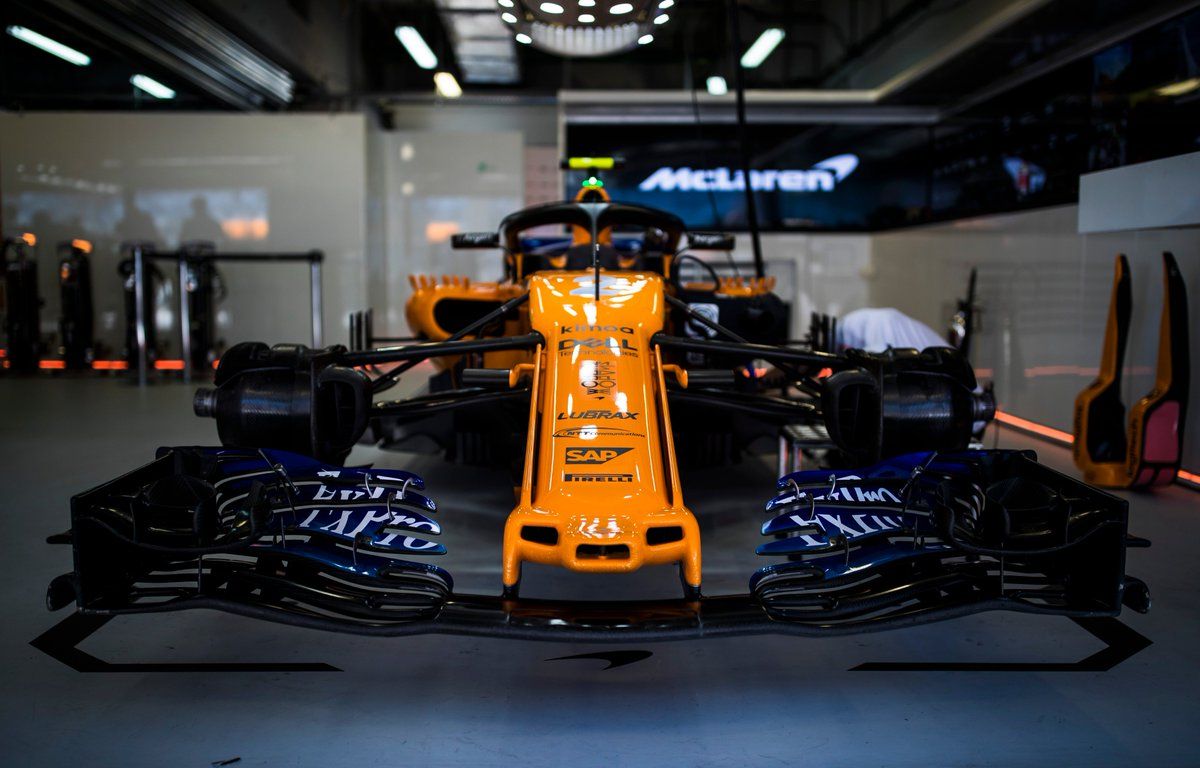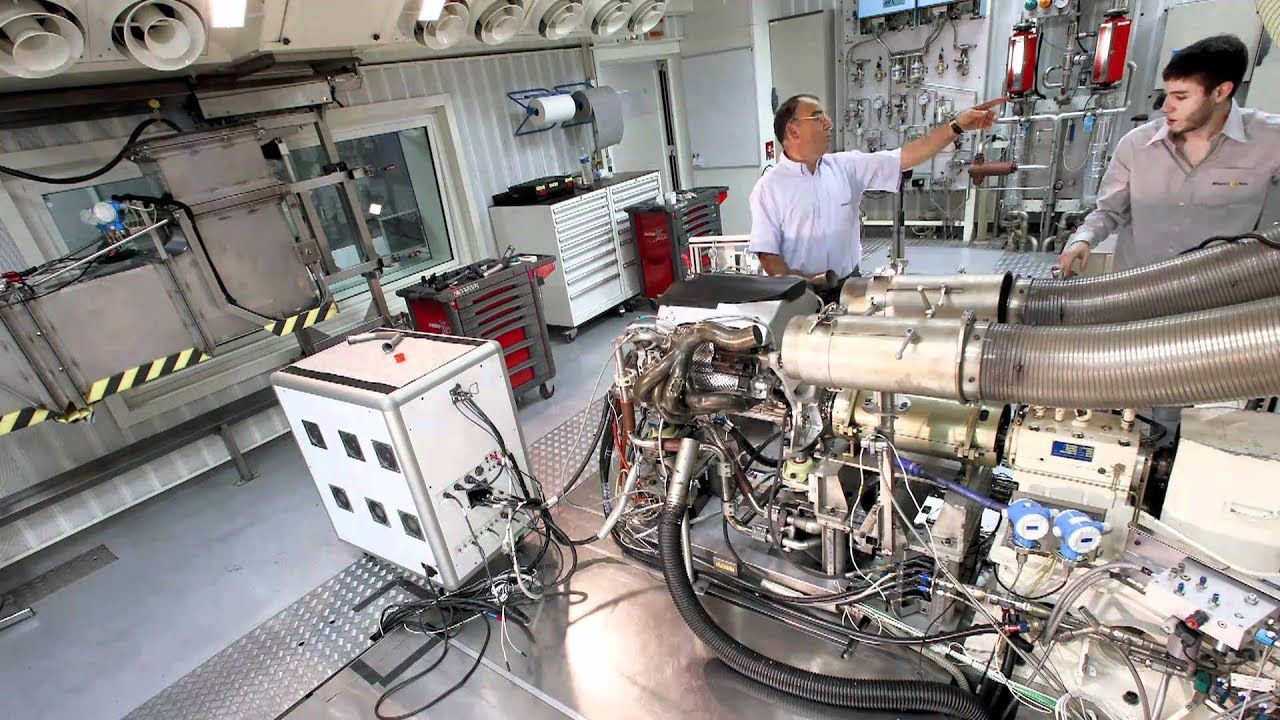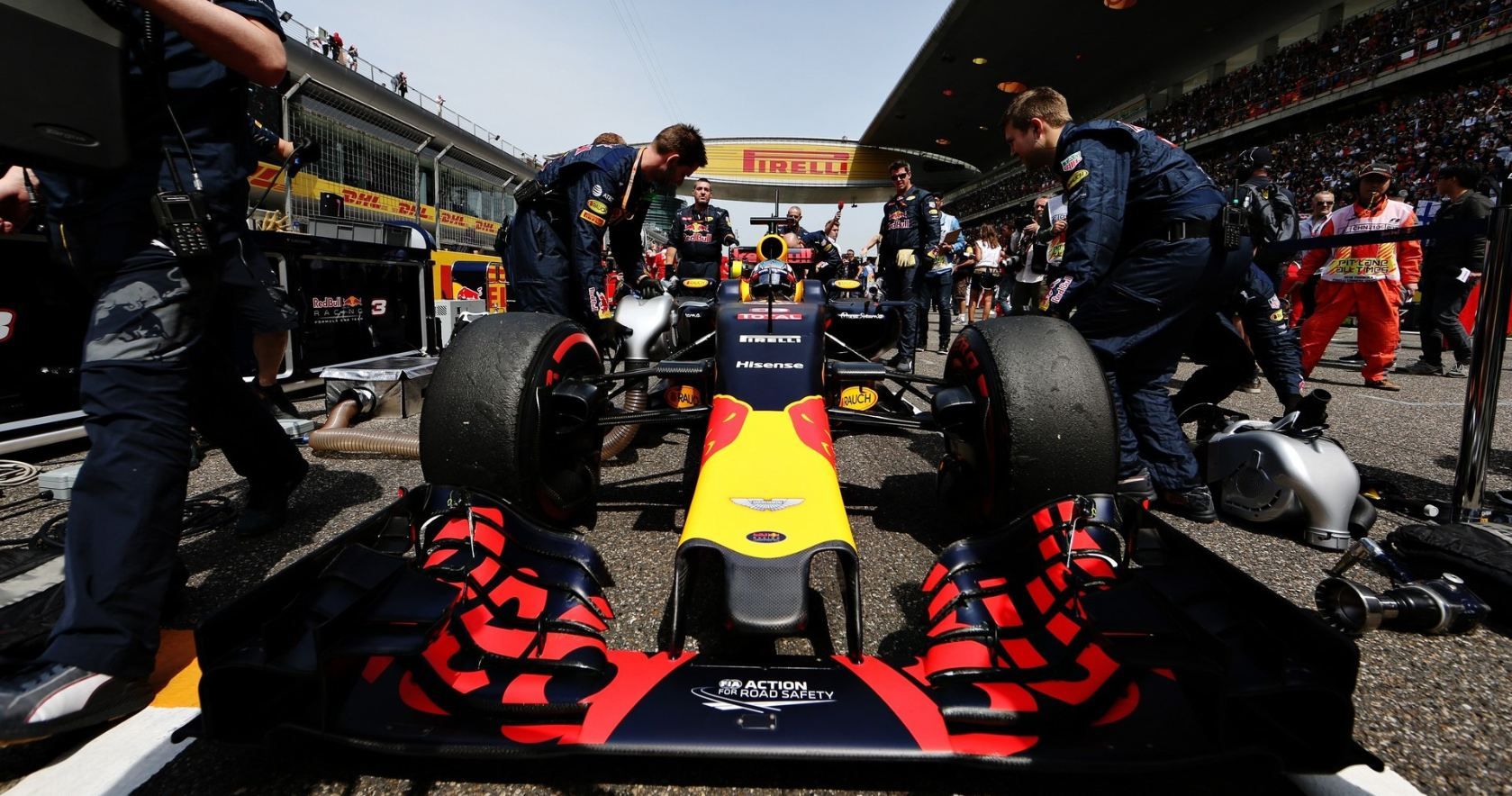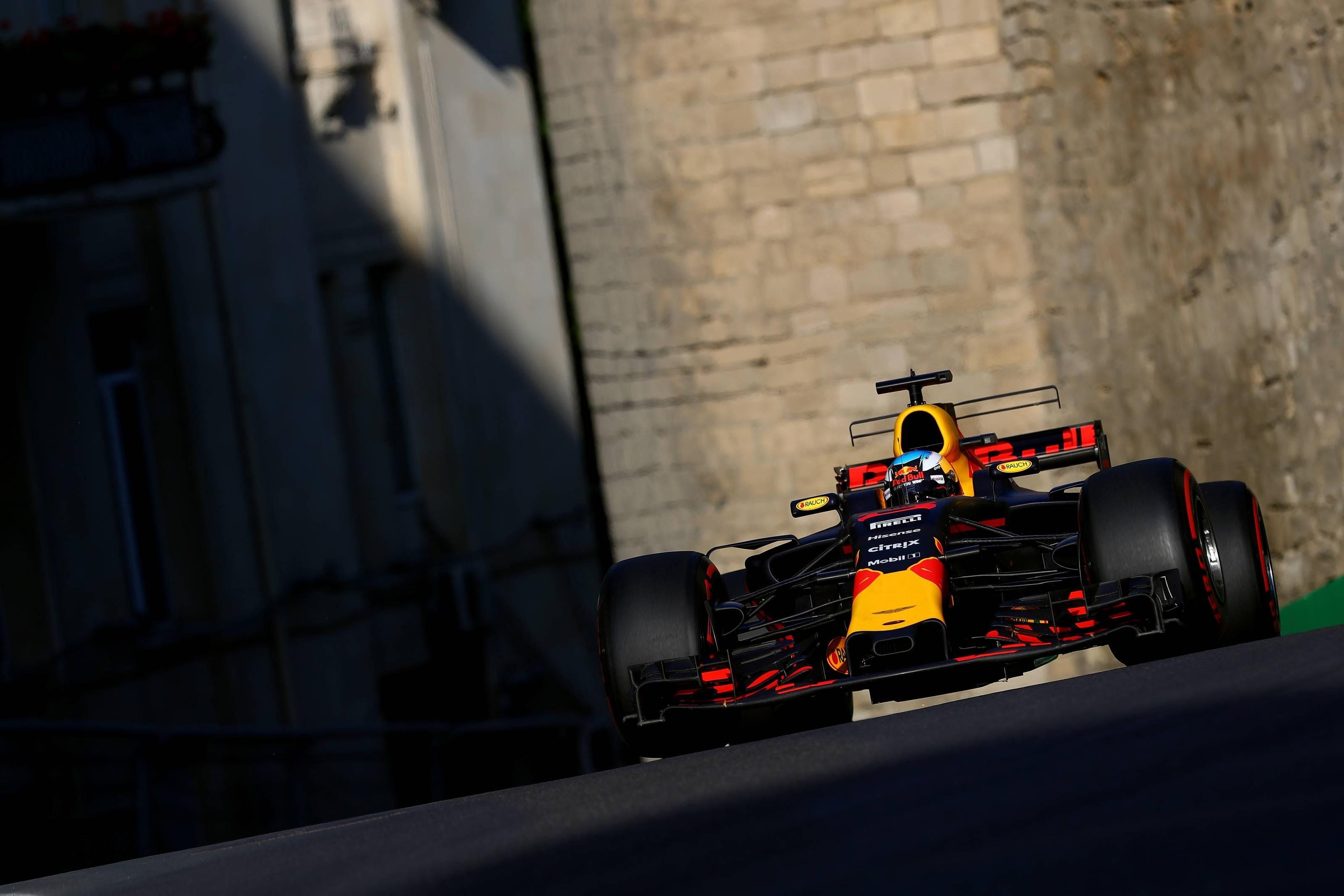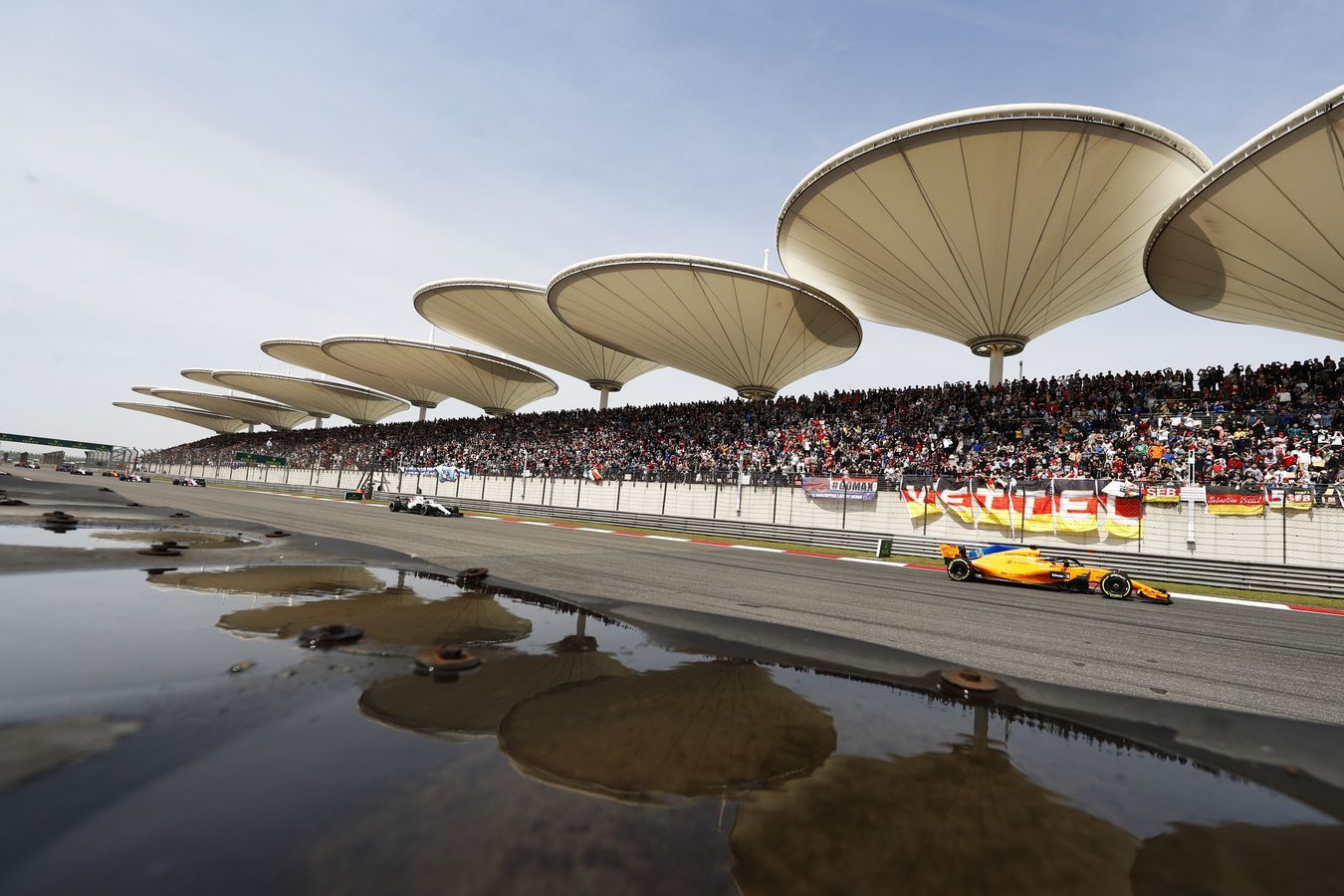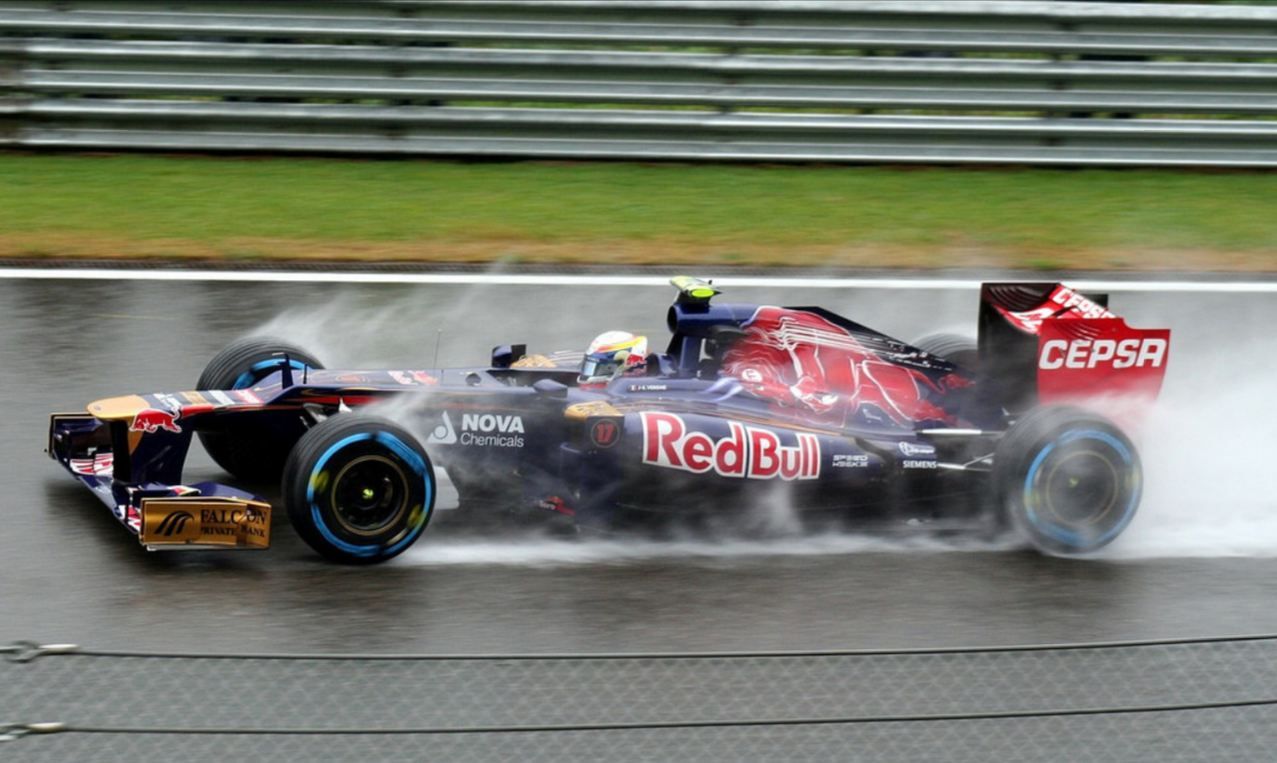Formula 1 racing is unlike any motorsport you’ve ever seen. You may think the WeatherTech series racecars are gnarly (which they are), but no other racing comes close to the physical anomalies that Formula 1 racecars produce on a regular basis!
NASCAR is a big deal, whether you like it or not, and we love all forms of motor racing. But although we have a very soft spot in our hearts for the many stock cars, drivers, teams, and sponsors that make it all happen, it’s honestly amateur hour compared to a day in the life of a Formula 1 racecar.
That’s an all-encompassing statement, also! Sure, Top Fuel Funny Cars may be some of the fastest accelerating cars on the planet but that’s all they do! No offense funny cars, we love you too, but the engineering that goes into a Formula car could very well put a man on Mars.
Formula cars aren’t the best-performing cars in any one aspect, save for cornering and braking maybe. Other racecars can race a lot longer and some go a lot faster; but how many racecars constantly run (for hours at a time) with enough energy to shoot a piston 300 feet into the sky? How does one actually engineer 18,000 RPM into high-strength alloy components, components that can not only shoot the car around the racetrack at break-neck speeds but do so with the constant pressure of the extreme drag induced by ridiculous aerodynamics? There are none!
This modern marvel of technical engineering is indeed a special one—and a multi-billion dollar one. It’s a HUGE industry and to make it all happen, there are some things that the Formula 1 bosses just don’t want you do know about! Like how are Formula 1 teams the world’s absolute best cheaters? Or how a Formula car can rip a manhole right out of the ground? Have you ever wondered how many gallons of water are actually displaced by those tires in wet conditions? The answers will break your brain, we promise!
20 They’re The Best Cheaters In The World
NASCAR may be credited with coy rule-bending such as fuel in the frame rails and basketballs in the fuel cells, but no motorsport comes as close to engineering perfection as Renault’s active mass damper. It was essentially pre-cheating because it wasn’t outlawed until it was already in use, but the bigwigs started wagging fingers at it when it made cars too good! It was basically a weight, suspended by springs in the nose, absorbing vibrations and bumps, thus allowing the car to maintain a more positive contact patch with the road beneath it.
19 Just How Expensive Are Those Engines
You’re looking at a third-tier Formula motor, falling behind both Ferrari and Mercedes, but that doesn’t make it any more affordable for you, peasant! Engines can cost upwards of $8 million dollars and are the epitome of what an internal combustion engine can be (for $8 million, it had better be an epitome!). It’s the most expensive part on the entire racecar, and it’s got more mind-boggling technology wrapped up in those six cylinders than a space station would know what to do with!
18 So, How Long Do Formula 1 Engines Last?
Formula engines last two races! They don’t necessarily explode like a grenade when they fire it up on the third race, but Formula 1 stipulates how often a driver may use a new engine; that number is eight per championship season. If there are 20 races in a season, the math works out to an engine needing to last at least 2.5 races, lest the offending race team be penalized 10 positions on the starting grid for two races. So, while they may have additional life left in them, Formula teams are inclined to keep it fresh every few races—if they like winning!
17 Some Of The Hardest Wrecks Come From Formula 1
One of the most underrated Formula 1 drivers in history has, perhaps, had the most interesting life of them all. David Purley survived a 10,000-foot free-fall when his parachute failed to deploy on an RAF jump. He would also survive a 108-mph collision with a barrier when the throttle of his CRP1 Formula car stuck open, halting the car completely within in 26 inches. This subjected his body to an incredible 179.8 G! It took an hour and a half to free him from his car with a shattered body but he would survive to race again. The car he crashed would eventually be restored in his honor (above).
16 How Much Fuel Are These Things Sucking Down?
Because of the complex engineering that goes into Formula 1 engines, they are designed to run only at extremely high outputs: driving a Formula on the streets would only give you about 30 horsepower! Although they operate at a much higher efficiency than your standard automobile, they need wide-open conditions to thrive! Formula fuel is mandated around 100kg/hr, which is approximately 0.8L per second! (Formula calculates in mass rather than volume.) If lap times average one minute and 30 seconds each, fuel consumption of 15 liters per lap could be assumed (four gallons per lap)! Fuel costs are estimated around a $450,000/year.
15 How Much Do They Spend On Tires?
Pirelli replaced Bridgestone as Formula 1's tire producer in 2011. In the process, they were asked by the powers that sanction the races to create a compound that would force teams to pit more frequently, thus mixing up the predictability of the outcome. Because of this viewer pandering, Formula 1 tires are extremely delicate and are very sensitive to temperature changes. So sensitive, in fact, that pit crews warm them up before being installed on the car with specialized blankets! All of this engineering and apparatus adds up quickly, but the bare tires themselves cost around $650 each (which translates up to $300,000 in tires per season).
14 How Much Does Owning A Race Team Really Cost?
A NASCAR team can incur $15 million in operational expenses annually. Formula 1 blows NASCAR down the road like a stray leaf: Red Bull Racing spent $264 million in 2016! Hass, one of the most frugal spenders, clocked in at $116 million for the same year! Obviously, the threshold varies widely, but Formula cars aren’t cheap and there are no two ways around it! With $8 million engines, $675,000 carbon fiber monocoque chassis, $170,000 nose cones, $165,000 hydraulic systems, $110,000 fuel tanks, and $50,000 steering wheels, we’ve only built half the racecar! (Ferrari, a top spender, infused nearly $430 million into their 2016 Formula team!)
13 How Dangerous Is Formula 1 Racing
It’s really a two-fold answer. On one hand, Kimi Raikkonen hit a wall at 150 miles per hour, sustaining a 47 G deceleration on impact, only to limp away with minor injuries. That's nothing like David Purley’s crash, but the cars are still exceedingly safe. Formula racing is also excessively dangerous so the balance between the two variables chewed up a lot of human lives in the formative days of Formula racing! 52 drivers have perished since 1952 (32 during race weekends); fifteen drivers in the 1950s, fourteen in the 1960s, 12 in the 1970s, four in the 1080s, and two in the 1990s. So it’s getting a whole lot safer but at the end of the day, it’s still racing!
12 The Hill Conspiracy
There’s a conspiracy aloft around the Formula 1 circuits and we don’t’ like it one bit! We can’t put our fingers on it but it stinks worse than the sushi you forgot in the back of your refrigerator for three months. The fact is, though, no racer with the surname “Hill” has ever failed to win a Formula 1 World Championship! Graham Hill was a two-time Formula 1 World Champion and would be the only driver to with the 24 Hours of Le Mans, Indianapolis 500, and Monaco Grand Prix. His son would also later win a Formula 1 title. And an unrelated Phil Hill would secure a championship in Formula racing, as well, in 1978!
11 Only One Woman Has Ever Scored Championship Points In Formula 1
In 1975, Lella Lombardi would climb out of her Formula car after a sixth-place finish at the Spanish Grand Prix, probably glad she was toward the front of the pack but upset that she hadn't done better. That mediocre day for her would go down in racing history—little beknownst to her at the time—as a milestone for women in the sport. She was a pioneer, especially in her day, and this race would earn her the distinction of being the only female ever to score points in a championship event! Had she had the support of better sponsorship and a better car as a result, could she have done better? Probably.
10 Women Are Coming Up No Matter What
This Spanish driver, Carmen Jorda, was a development driver for the Renault Formula 1 Team from 2015 to2017, making her the 11th woman in history to be on a Formula roster in a driving position. She’s done plenty of other racing in her career, starting out in karting until eventually progressing to Spanish Formula 3 in 2007. Not satisfied, she continued to move forward, despite the natural opposition you could expect for a woman in this calling. She made the transition from test driver to circuit racer in 2010 when she signed with Anderson Racing to participate in the Firestone Indy Lights Series!
9 We're Not Kidding About The Cheating
We’re not kidding when we say they’re enterprising with their workarounds! When Formula 1 outlawed flexible wing sections that allowed a reduction in drag under high pressure due to deflection of said wing, McLaren engineered a solution that we still can’t quite figure out today. From what we can speculate, there’s a special duct that the driver can block with his knee while on straightaways. This vent affects airflow over the rear wing through internal ductwork but due to the nature of the design, breaks no regulations and creates high downforce in the corners and low drag on straightaways, just like they like it.
8 McLaren Can't Win, No Matter What
November of 2017 marked the 19 year anniversary of McLaren’s title drought. At the estimated costs of racing outlined above, not winning for two decades can have an absolutely awful effect on the race team’s bottom line. It wasn’t entirely their fault, however. They were the last Formula 1 manufacturer to win a championship before Ferrari would rip through the 2000s with five consecutive wins during the decade. That final race was a highlight for McLaren, obviously, but the hard-racing Ferraris were showing their horns and would soon dominate everything with a wing and four wheels.
7 Formula Cars Can Stick To Anything (In Theory)
Many people try to debunk this theory with an apples to oranges hypothetical situation that overshoots the magic of the spirit in which the observation was made. The numbers are solid, we think: if Formula 1 cars can generate 3.5 G around corners, they should be able to stick to a ceiling. This is due to the aerodynamics that plaster them to the road. If that same downforce is applied to an inverted racecar, at full speed, it should be able to drive upside down, right? People like to throw assumptions at this theory, like fluid transfer and engine design. Of course, it wouldn’t technically work! The cars aren’t engineered to run upside down. Most airplanes can’t fly upside down either, by that logic, (but most of them really can, just not well).
6 Formula Cars Drive On The Absolute Brink Of Disaster
We get so used to watching these things swing around hairpins like slot cars that we forget they are actual machines; it’s the detachment between what we understand motors to be able to endure and what they actually can endure. Most of us are used to a redline of around 6,000 RPM that we don’t even know what the vibrations from an engine turning 18,000 RPM feel like! (It’s smoother than you’d think.) As bullet-proof as they may seem, catastrophic failure is always right around the corner. A piston, detached from the rod at full engine speed (without the obstruction of the components above it) would have enough kinetic energy to shoot 300 feet into the sky.
5 It’s Almost Too Easy
The fastest Formula 1 pit stop ever recorded was 1.920 seconds in the 2016 European Grand Prix by Team Williams—but it was hardly an anomaly. In 2013, at the U.S. Grand Prix, Mark Webber’s Red Bull Racing Team would pound him out in only 1.923 seconds. In 2013, Fernando Alonso's Ferrari team would slam him back into the race in 1.950 seconds. Again, in 2013 (in Malaysia), Mercedes’ 2.31-second record was bested by the Infinity Red Bull Racing Team, pumping Mark Webber back into the flow of traffic in just 2.05 seconds. NASCAR can only do this with a “splash and go” which means no tires get changed.
4 It’s Not Easy At All!
Formula racing is some of the most abusive racing a driver can sustain and (sometimes) survive. An impact at 160 MPH (like in the case of Heikki Kovalainen’s Spain incident) causes a declarative force of 26 G (nothing compared to what we’ve been looking at). But what happens to his insides? His rib cage is strapped in, but what about what’s inside the ribcage? Or the head? Formula 1 drivers are athletes; they have to be. Jensen Button proved this when he completed an Olympic triathlon in 2 hours and 22 minutes. The Olympic record for this event is 1:48:24!
3 How Big Is Formula 1?
Formula 1 is BIG! You don’t think Ferrari spends almost $500 million a year for no reason, do you? Formula 1 is primarily based in Europe, with only half of the races taking place around the world—but they’re all over the world! The copious spending causes a significant economic impact by nature of its existence, not only in a job creation aspect but in an economically stimulating aspect, as well. (Think of all the people that support the Formula operations: airlines, hotels, food catering, amenities, etc.) Don’t forget about the fans! All that revenue! When Formula 1 changed ownership in 2017, it was reportedly an $8 billion deal!
2 Formula Cars Are Hardly Cars At All
Sure, we call it Formula “Car” racing, but is it really car racing? Let’s take a brief look at the craziness that is a Formula 1 racecar and you can decide if that falls in the “car” category or the “not car” category. The brake disks reach the same temperature as molten lava under heavy braking. Braking force is hard enough to squirt liquid from a driver’s tear ducts onto his visor. Drivers endure more g-forces than astronauts. Finally, before the Monaco Grand Prix, manhole covers need to be welded down to prevent the low-pressure area under the cars from ripping them out of place during the race.
1 They Really Aren’t Cars At All
If that’s not convincing enough, consider this fun water fact! Formula 1 cars, while driving in wet conditions, can displace up to 66 gallons of water per second (filling up your large bathtub up in less than 2 seconds—per car!). Multiply that by the number of cars in a typical race circuit (20), and then by the number of seconds in a 90-minute race (5,400), and the numbers are mind-numbing! During a race, each car displaces approximately 356,000 gallons of water. A 20-car grid, during the same timeframe, would displace 7 million gallons throughout the race! Ever seen a car do any of that?
Sources: Autosport, Racecar Engineering, Formula 1, NBC News, and The Drive.


